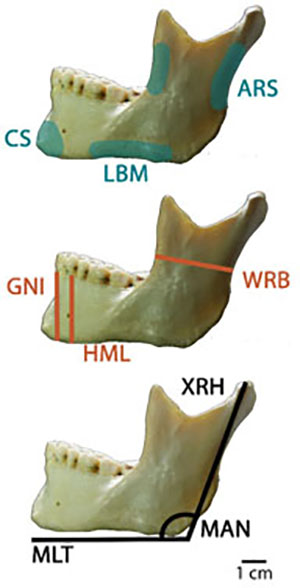Maxwell Museum Blog

In forensic cases, complete skeletons are not always available for assessment of sex and ancestry. In such cases, bone specific methods to assess sex and ancestry may be needed. The (hu)MANid program developed by Berg and Kenyhercz (2017) allows to estimate sex and ancestry using metric (e.g. chin height (GNI)) and nonmetric (e.g. chin shape (CS)) variables from isolated mandibles (lower jaw bones); however, the software has yet to be validated with data outside its reference sample. The aim of Ms.Lynch’s studythis study was to assess the accuracy of the program estimating sex using both 3D scans and direct measurements. Direct measurements of the mandibles were collected from the Maxwell Museum’s Documented Skeletal Collection. Since a majority of the individuals arewere of similar ancestral backgrounds, only estimations of sex were assessed for this project. Overall, the direct measurements had higher correct classification rates for estimating sex than the 3D scans.
For more information on the (hu)MANid app visit: http://www.anthropologyapps.com/
Post by Paige Lynch, M.S.
Paige is a 2nd year Ph.D. student in UNM’s Evolutionary Anthropology graduate program. This research is an extension of her master’s thesis, which she completed at Mercyhurst University in 2018. Paige presented this research at the annual American Academy of Forensic Sciences meeting in Anaheim, California in February 2020.
References:
Berg, Gregory E. and Kenyhercz, Michael W. (2017). Introducing Human Mandible Identification [(hu)MANid]: A Free, Web-Based GUI to Classify Human Mandibles. Journal of Forensic Sciences. Mar 6. doi: 10.1111/1556-4029.13479.
Caption Information:
Blue represents the location of the nonmetric measurements scored. Orange and black colors represent the metric measurements scored. This mandible is from donor #102 (Maxwell Catalog #: 80.7.24).

